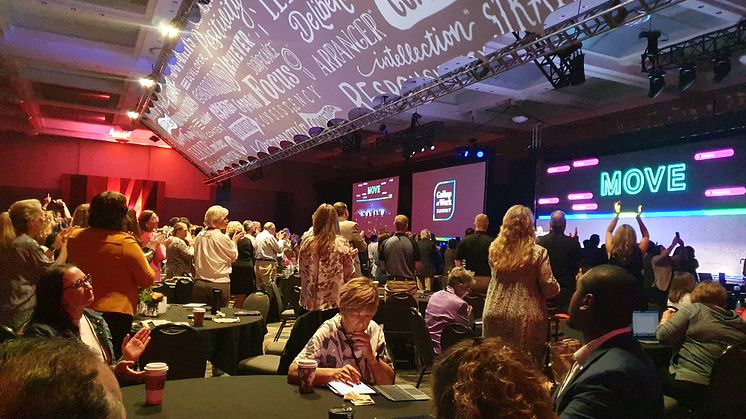
Blog post -
Your best culture already exists: how to build engagement and a strong workplace culture
Everybody wants a strong culture for their team, their office or their company, to attract and retain talent, to foster collaboration, and ultimately to boost productivity. But it seems too fluffy and nebulous to appear attainable.
The Gallup@Work 2023 conference in Omaha/Nebraska last week heard some easy-to-follow concepts, but also a warning that culture plays a major role in whether your staff stay or go, especially if you don't get the communications piece right.
Based on the definition that culture is "the way things are done around here" the key question is how do you want things done, and how do you not want things done. What behaviours do you want to see more of, and less of?
Inherent in this question is that your team is already practising favourable behaviours. Just as CliftonStrengths focuses individuals on doing more of what they're good at, rather than on fixing weaknesses, Gallup focuses teams on identifying, solidifying and scaling those favourable behaviours.
In other words, leaders don't need to invent a nice-sounding lofty culture to aspire to. Just do more of what already works, work intentionally to secure buy-in, and the culture you want will take hold. It's like culturing pearls. You don't need a new oyster. The grain of sand you need is already there.
There is some wiggle room within culture for individual freedoms. Be prepared that your culture will need nurturing and that it will continue to evolve.
Of course, culture does not exist in a vacuum so it's important to find answers to questions like, does the culture we want align with our brand and purpose, does the culture we want actually drive performance, and, is everybody on board?
Once you've worked through the answers rallying all staff around those favourable behaviours, driving adoption and fine tuning as you go becomes easier.
Which brings us full circle to the question of the role of communication. Leaders need to set the tone on culture, walking the walk and talking the talk. Research in the US by Gallup finds employees are 73% less likely to feel burnt out at work when leaders communicate effectively with them. But only 18% strongly agree that leaders actually communicate effectively.
Staff are 7.5x more likely to feel connected to the organisation's culture when their leaders have helped them understand how changes made today will shape the organisation's future. But only 18% of US employees strongly agree this is happening. Employees are 4x more engaged if they trust leaders, but only 21% do.
Assuming the statistics are similar in Asia, senior business leaders here have a lot of work to do to communicate effectively, to help their staff see the future benefits of current changes, and to build trust. Building a culture of effective communication is an essential ingredient in building a strong culture.

